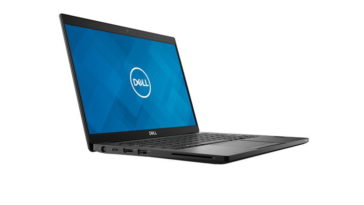Shopportunist: Simple ways to build your coupon cache

Coupons are currency, in a sense. Hand a stack of coupons to a store cashier and you will instantly trim your total.
That’s not groundbreaking news. After all, ninety-two percent of consumers use coupons and nearly half (45%) use coupons always or very often, according to the Coupon Intelligence Report produced by Valassis, a media and marketing services company.
But, to be a successful couponer, you’ll need to amass a stash of money-saving strips. In order to do that, you’ll need to know where to look.
When it comes to building a coupon cache, there are three main sources: Sunday circulars, Internet printables and e-coupons.
Naturally, I am a proponent of shearing apart those shiny, colorful inserts you see in your Sunday Times Union. The flyers not only offer a sizable and tangible collection of coupons, but when you purchase the paper you are helping to support local journalism.
Most Sunday papers will feature two, sometimes three and if we’re super lucky, four, coupon inserts. Manufacturers tend to pause distribution of circulars on holiday weekends. If you want multiple copies, remember, not everyone cares for coupons (gasp!). If family and friends subscribe to the paper, but not the principles of couponing, consider asking them for their flyers.
These days the web offers a cash crop of coupons for savvy savers. Some of the most popular sites for finding online coupons are Coupons.com, SmartSource.com, Valpak.com, GroceryCouponNetwork.com, P&GGoodEveryday.com (Procter & Gamble) and RedPlum.com. Lozo.com is another great source. The site culls thousands of coupons from all over the web and dumps them into a searchable central database. While these services are free, you may have to sign up for an account.
If you’re brand-loyal, check out your favorite manufacturers’ websites. They may have printable coupons available. Pillsbury, Betty Crocker and Kellogg’s routinely showcase exclusive coupons.
“Like” your favorite products on Facebook. Manufacturers will often give out high value coupons to Facebook fans (if you’re quick enough to catch them before they are all snatched up).
Wherever you go, when clicking and printing Internet strips it’s important to note that you can only print two like coupons per computer. Also, never photocopy a coupon. All printed coupons have a unique serial code. Photocopying is considered fraud and is illegal.
Consumers still prefer paper coupons more than other types of discounts, according to the aforementioned study by Valassis. However, results show a significant growth in the desire for paperless discounts, including mobile discounts and those downloaded to a loyalty card.
Utilizing digital coupons, or e-coupons, is really the most effortless way to accumulate a collection of coupons and save money on your grocery bill. No paper or scissors required. Price Chopper/Market 32, Hannaford, ShopRite and Target all offer manufacturer and even store-specific e-coupons. Hannaford, for one, routinely drops a downloadable coupon into my account that’s valued at $10 off an order of $10 or more.
To access each store’s e-coupons you’ll need to create an account via the grocer’s website or mobile app. From there you’ll load the e-coupons – with a simple click – into your personal account. When you purchase specified items and scan your card, the digital coupon will be automatically applied to your order.
While it’s not a leading source, it’s worth mentioning that some stores like CVS and Price Chopper have in-store kiosks where you can print coupons by scanning your loyalty card. These are often store-specific coupons that can be paired with manufacturer coupons for extra savings. More on that to come.
Now that you have a crop of coupons, it’s important to develop a system of organization so that you can enjoy a stress-free, money-saving shopping trip. My method of choice, a $1 plastic accordion-style filing pouches each labeled by department, works for me but may not cut it for you. Binders are another option if you don’t mind the bulk. Or, you can keep it simple and use an envelope.
And, now that you have a heap of coupons and are committed to cutting your grocery bill, you’ll need a quick lesson on each store’s varying policies. It will help ease the coupon learning curve and keep you calm and collected while shopping. We’ll touch on that next week.
Editor’s note: This is the first in a short series of stories Shannon Fromma, our Shopportunist, will be doing in Unwind on couponing. Pick up future Sunday papers for more of her expertise.
Before you start clipping and passing coupons to a store cashier, you’ll need a lesson in the language of savings. Here is a list of the most popular coupon acronyms and terms, so let this lexicon guide you to greater grocery savings.
$/$$: The dollar amount you’ll save based on the dollar amount you purchase. (ie: $5/$25 means you’ll save $5 when you spend $25).
$/#: The dollar amount you’ll save for every number of a particular product you buy. (i.e., You’ll save 50 cents when you buy two rolls of paper towels).
BOGO/B1G1: Buy one, get one free
B2GO/B2G1: Buy two, get one.
Catalina or Cat: A coupon (named for the company that offers them) that prints at the register when you purchase select participating items; you’ll typically receive them along with your receipt.
DND: Do not double.
Exp: Expires.
FAR: Free after rebate.
HBA: Retail term for health and beauty products.
Inserts: Sunday newspaper coupon circulars.
IP: Printable Internet coupon.
MQ or MFR: Manufacturer’s coupon
MIR: Mail-in rebate.
OYNO: On your next order.
OOP: Out of pocket.
OOS: Out of stock.
Peelie: A coupon you peel directly from a product and use immediately.
POP: Proof of purchase.
PSA: Prices start at.
Q: Coupon.
Stack: Pairing a store coupon with a manufacturer’s coupon for added savings.
SQ/store coupon: A store-specific coupon that can only be used at that store.
Tear Pad: An in-store stack or pad of coupons or rebates located near a specific product.
WYB: When you buy.
YMMV: Your mileage may vary (It may work differently in your situation, or be different in your experience.)
Published at Wed, 20 Jan 2021 16:25:46 +0000














Comments
Loading…